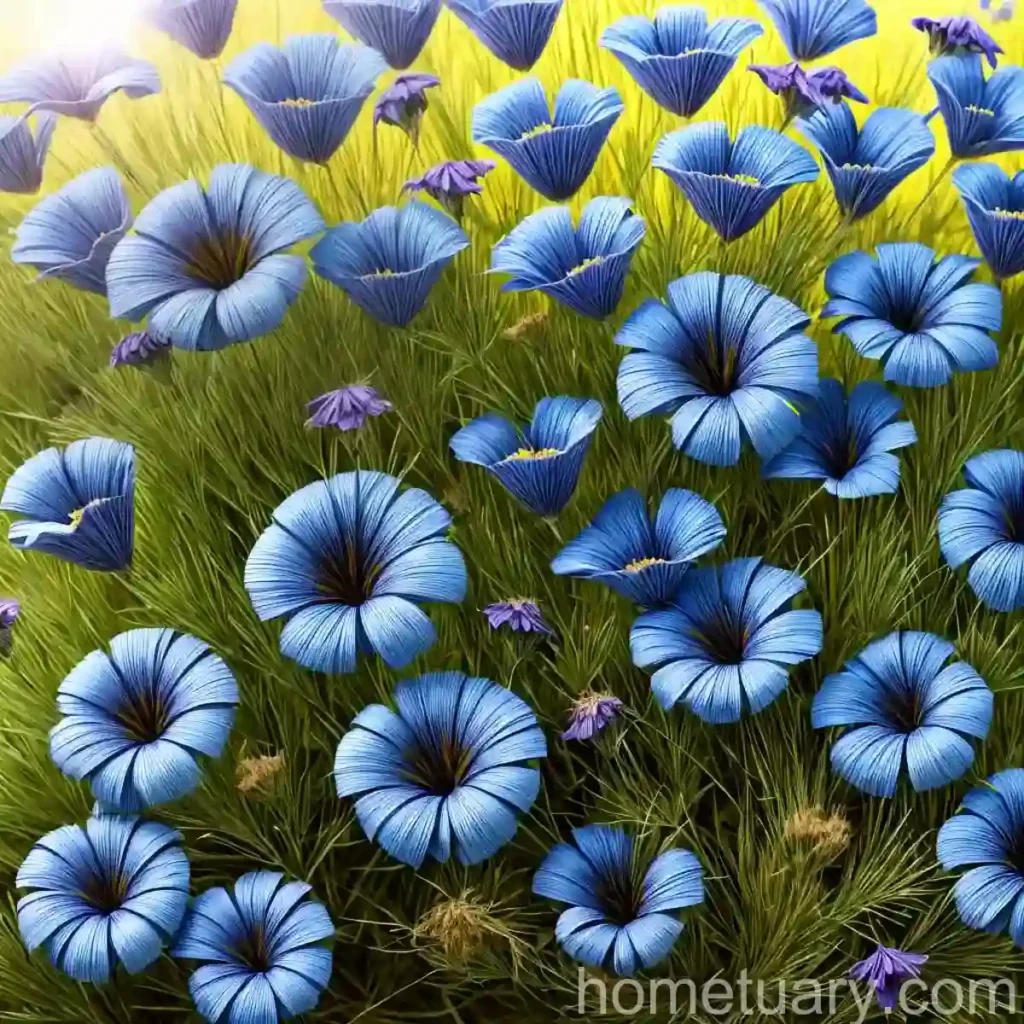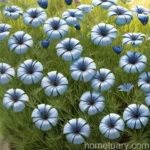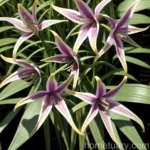Perennial Flax (Linum perenne) – A Comprehensive Guide
Perennial flax, scientifically known as Linum perenne, is a delightful flowering plant that has captivated the hearts of gardeners and plant enthusiasts for centuries. With its delicate blooms and adaptability, perennial flax has found its way into a wide array of cultural, landscaping, and medicinal uses.
In this comprehensive guide, we will delve into the various aspects of perennial flax, including its cultural requirements, uses, maintenance, propagation, common diseases and pests, and much more. Whether you’re a seasoned gardener or a novice plant enthusiast, this guide will equip you with the knowledge and tips to cultivate and care for perennial flax effectively.
What is Plant: Perennial Flax (Linum perenne)?
Perennial flax, or Linum perenne, is a species of flowering plant in the Linaceae family. It is a herbaceous perennial that is native to parts of Europe and Asia. This beautiful plant is renowned for its delicate, sky-blue flowers that grace the garden with their charming presence.
Key Takeaways – Perennial Flax (Linum perenne)
Before we delve into the specifics of perennial flax, let’s take a moment to highlight the key takeaways about this captivating plant:
- Scientific Name: Linum perenne
- Family: Linaceae
- Common Name: Perennial flax
- Plant Type: Herbaceous perennial
- Flower Color: Sky-blue, though some varieties may exhibit white or pink flowers
Now that we have a general understanding of perennial flax, let’s explore the various aspects of cultivating and caring for this enchanting plant.
Culture
Cultivating perennial flax involves understanding its cultural requirements, including water, sunlight, fertilizer, soil, and pruning practices. Let’s delve into each of these aspects in detail.
Uses
Perennial flax is a versatile plant that serves various purposes, making it a valuable addition to gardens and landscapes. Here are some of the common uses of perennial flax:
- Ornamental Purposes: The delicate, sky-blue flowers of perennial flax make it a popular choice for ornamental plantings in gardens, borders, and containers.
- Medicinal Properties: Historically, flaxseeds have been used for their medicinal properties, offering benefits for digestive health and as a source of essential fatty acids.
- Wildlife Gardens: Perennial flax is a favorite among pollinators, making it an excellent addition to wildlife-friendly gardens.
- Cut Flowers: The attractive blooms of perennial flax make it a delightful choice for cut flower arrangements, adding a touch of natural elegance to indoor spaces.
Water
Perennial flax generally prefers well-drained soil and moderate watering. Overwatering can lead to root rot, so it’s essential to strike a balance in watering to ensure the plant’s optimal health. During hot and dry periods, it may be necessary to increase watering frequency to prevent the soil from drying out completely.
Sunlight
Perennial flax thrives in full sun to partial shade, making it adaptable to a range of light conditions. However, for the best floral display, providing it with ample sunlight is recommended.
Fertilizer
When it comes to fertilizing perennial flax, a balanced, all-purpose fertilizer can be applied in early spring to support healthy growth and blooming. It’s important to follow the manufacturer’s instructions for application rates and to avoid over-fertilization, which can lead to excessive foliage at the expense of flowers.
Soil
Perennial flax prefers well-drained, moderately fertile soil. It adapts well to various soil types, including sandy and loamy soils. However, ensuring good drainage is crucial to prevent waterlogging, which can be detrimental to the plant’s health.
Pruning
Pruning perennial flax primarily involves deadheading spent blooms to encourage continuous flower production and to maintain a tidy appearance. Additionally, cutting back the foliage after flowering can help rejuvenate the plant and promote fresh growth.
Propagation
Propagating perennial flax can be achieved through several methods, including division and seed propagation. Let’s explore these propagation techniques in detail:
- Division: In early spring, established perennial flax clumps can be carefully divided, with each division containing healthy roots and shoots. These divisions can then be replanted in suitable locations to establish new plants.
- Seed Propagation: Perennial flax can also be propagated from seeds, which can be sown directly in the garden in the spring. Providing a light covering of soil over the seeds and maintaining consistent moisture can support successful germination.
Container Popularity
The adaptability and striking visual appeal of perennial flax make it a popular choice for container gardening. When grown in containers, perennial flax can grace patios, balconies, and other outdoor spaces with its delicate blooms, adding a touch of natural beauty to urban settings.
Container Common Diseases
While perennial flax is generally resistant to many diseases, it may be susceptible to certain fungal infections, particularly in conditions of high humidity and poor air circulation. Common diseases that can affect perennial flax in containers include:
- Powdery Mildew: This fungal disease can manifest as a powdery white coating on the leaves, affecting the plant’s overall health and appearance.
- Root Rot: Overwatering or poorly-drained soil can lead to root rot, causing the plant to wilt and decline.
Disease Diagnosis
Diagnosing diseases in perennial flax involves careful observation of the plant’s symptoms, including changes in leaf color, texture, and overall vigor. Additionally, inspecting the undersides of leaves and the soil for signs of fungal growth can aid in identifying specific diseases.
Common Pests
Perennial flax is relatively resistant to pest infestations, but like most plants, it may encounter occasional issues with pests. Common pests that may affect perennial flax include:
- Aphids: These small, sap-sucking insects can cluster on tender new growth, leading to distorted foliage and reduced plant vigor.
- Spider Mites: These minuscule pests can cause stippling and discoloration of leaves, often leading to weakened plant health if left untreated.
Botanist’s Tips
As a plant scientist, I have found that incorporating certain tips and practices can greatly enhance the cultivation and care of perennial flax. Here are some expert tips for cultivating and maintaining perennial flax:
- Mulching: Applying a layer of organic mulch around perennial flax can help conserve soil moisture, suppress weed growth, and provide a tidy appearance to the planting area.
- Companion Planting: Pairing perennial flax with companion plants that share similar cultural requirements can create harmonious and visually appealing garden compositions.
- Regular Monitoring: Keeping a watchful eye on the plant for signs of disease, pest infestations, and overall health can allow for timely intervention and maintenance.
Fun Facts
Perennial flax is a plant steeped in history, folklore, and natural beauty. Here are some intriguing and delightful fun facts about perennial flax:
- Symbolism: In various cultures, flax has been associated with symbolism related to purity, love, and prosperity, adding an extra layer of significance to its presence in gardens.
- Textile Production: The fibers of flax have been used for millennia in the production of linen and other textile materials, showcasing the plant’s versatility and utility beyond its ornamental value.
- Historical Significance: Flax cultivation has a rich historical significance, playing a vital role in economies and cultures, particularly in regions where it was a prominent crop.
Links to External Resources
For further information on perennial flax and related topics, the following external resources are valuable references:
- Royal Horticultural Society – Linum perenne
- North Carolina State University Extension – Growing Flax
- University of Maryland Extension – Flax as a Cover Crop
- Missouri Botanical Garden – Linum perenne
In conclusion, perennial flax, or Linum perenne, is a captivating and versatile flowering plant that holds a special place in gardens, landscapes, and historical contexts. By understanding its cultural requirements, uses, propagation techniques, and maintenance practices, gardeners and plant enthusiasts can foster the health and beauty of perennial flax, allowing it to thrive and enchant for years to come. Whether grown for its ornamental value, ecological benefits, or historical significance, perennial flax continues to weave its timeless allure into the fabric of botanical appreciation and admiration.















